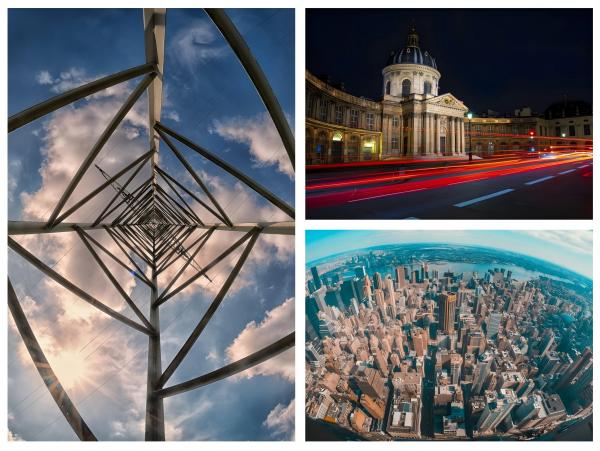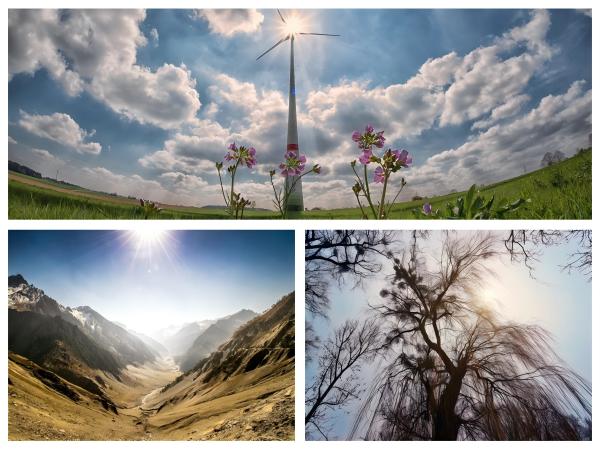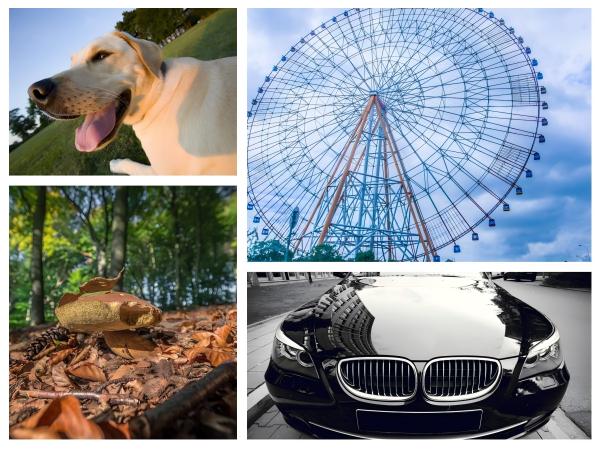Wide-angle lenses have a short focal length, a wide angle of view, and a long depth of field, and can produce very impactful images. They are widely used in landscape, architectural, and other photography. Due to their unique imaging characteristics, wide-angle lenses require some special considerations when used.
What are the special considerations for using wide angle lenses?
Because of its unique imaging characteristics, wide-angle lenses require special considerations to ensure optimal shooting results:
1.Pay attention to distortion control
Due to their structural characteristics, wide-angle lenses are prone to barrel distortion, which can cause objects at the edges of the frame to appear distorted. For example, straight lines can appear curved or bulged. This distortion is particularly noticeable when photographing buildings or landscapes.
Therefore, photographers need to pay special attention to composition when shooting, avoiding placing important objects at the edges of the frame to minimize the effects of distortion. For example, you need to keep the camera in a horizontal position when shooting, or correct it through software later.
Pay attention to distortion control when using wide-angle lenses
2.Pay attention to composition and subject selection
Wide-angle lenses have a broad field of view, which can easily include too many background elements, resulting in a cluttered image and distracting the viewer’s attention. Therefore, photographers need to plan their compositions in advance, choose a clear subject, and use clever compositional techniques to highlight the subject.
For example, using foreground lines, lines, or leading lines can guide the viewer’s eye, making the image more focused and clear. For example, when photographing buildings, you can use the geometric lines of bridges and fences to enhance the sense of depth in the picture.
3.Pay attention to the treatment of light
The wide angle of view of a wide-angle lens can cause vignetting (low light at the edges of the lens) when shooting in low-light conditions, especially in backlit conditions.
At this time, you can appropriately increase the ISO sensitivity of the camera and use the highlight tone priority function to reduce the vignetting problem. If necessary, you can also use fill light equipment (such as a flash or reflector) to balance the light in the picture and ensure that the overall brightness of the picture is uniform.
Pay attention to light processing when using wide-angle lens
4.Be careful when using filters
Be careful when using filters, especially when using a wide-angle lens with a polarizing filter or screw-on filters, as this may cause blurring around the edges of the image or dark corners. Slip-on filters are generally more suitable for wide-angle lenses.
For example, using an ultra-wide-angle lens with a polarizing filter can result in uneven lighting in the sky, requiring post-production adjustments to the sky’s saturation. Alternatively, this combination should only be used in scenes with partial reflections (such as water).
5.Pay attention to focus and depth of field
The short focal length of a wide-angle lens can make autofocus difficult and prone to loss of focus, so manual focus is recommended. In addition, wide-angle lenses usually have a larger depth of field, which can ensure that most areas from the foreground to the background remain clear.
If you need to highlight the subject, you should try to move the subject close to the lens and use a large aperture to compress the depth of field.
Pay attention to focus and depth of field when using a wide-angle lens
6.Pay attention to shooting angle and stability
Due to the particularity of the viewing angle, special attention should be paid to the choice of shooting angle when shooting with a wide-angle lens. Wide-angle lenses are ideal for shooting from low angles, enhancing the sense of depth and three-dimensionality.
However, care should be taken to avoid contact between the lens and the ground to prevent scratches. When shooting from high angles, it’s important to maintain a stable lens to avoid blurring caused by hand shake. To prevent distortion, use a tripod if necessary.
In general, the use of a wide-angle lens requires careful planning based on its imaging characteristics. Photographers should be familiar with its strengths and weaknesses, paying attention to issues such as distortion, composition, and shooting angles. Through practice and the proper application of techniques, they can fully utilize the visual advantages of a wide-angle lens to create impressive and visually impactful images.
Final Thoughts:
By working with professionals at ChuangAn, both design and manufacturing are handled by highly skilled engineers. As part of the purchasing process, a company representative can explain in more detail specific information about the type of lens you wish to purchase. ChuangAn’s series of lens products are used in a wide range of applications, from surveillance, scanning, drones, cars to smart homes, etc. ChuangAn has various types of finished lenses, which can also be modified or customized according to your needs. Contact us as soon as possible.
Post time: Oct-17-2025






